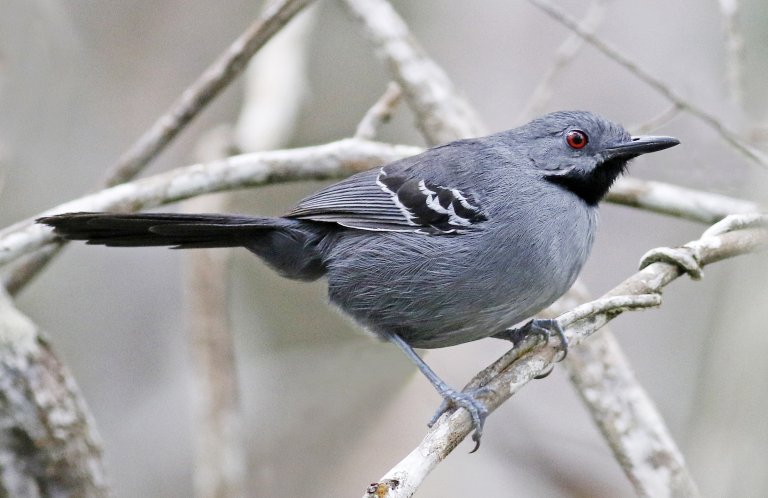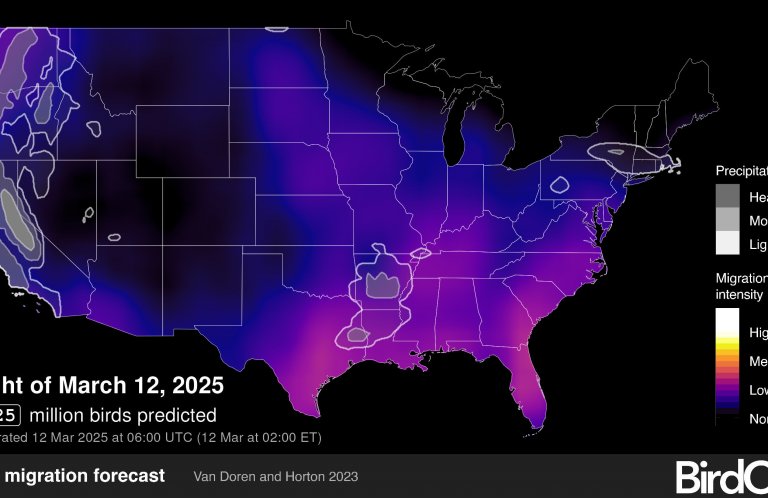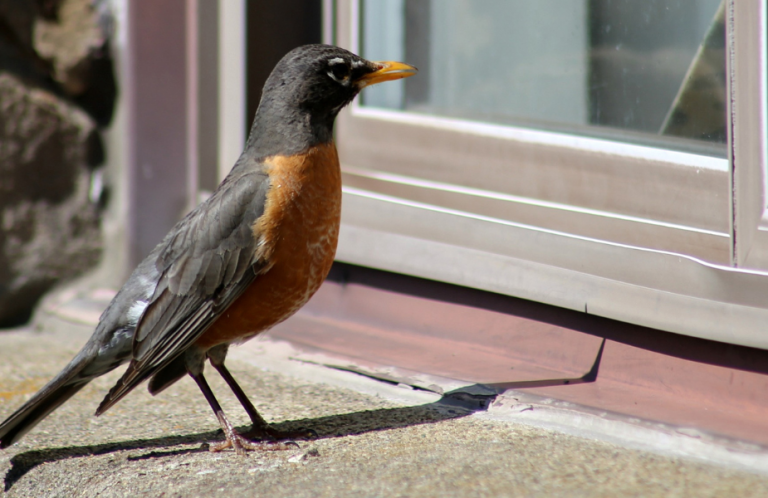The Truth about Tropical Birds: Five Common Myths Busted
You've probably seen it before: An explorer creeping through a silent, steamy jungle freezes in terror as the tropical birds above erupt in a fit of squawking, warning of some unseen threat. The basics of the scene have played out in countless films, and while the dangers may vary, the birds rarely do. Vibrantly colored, parrot-like, and prone to uncontrollable screeching, these winged emblems of the rainforest spy all from their mossy perches.
Sure, these flashy birds make for good cinema, but their similarity ignores the complex, awe-inspiring, and, ultimately, more satisfying truth about birds in the tropics.
In real life, these birds play critical roles in a kaleidoscopic array of ecosystems stretching from, yes, hot jungles to savanna and high mountain grasslands. To survive in so many different environments, tropical birds have evolved into the most diverse bird groups in the world.
All too often, though, these facts are overshadowed by oversimplified stereotypes. To shed light on the subject, we've busted five of the most common myths about tropical birds, using real-life examples from the Western Hemisphere below.
1) All tropical birds live in jungles: False

Puna or James' Flamingos by Parichut Wongthai.
Puna or James' Flamingos inhabit alkaline lakes in the Central Andes at elevations up to and above 14,000 feet. Temperatures there are prone to be frigid year-round and little grows. But these flamingos aren't the only birds venturing to these jungle-free heights: More than 200 species of tropical birds can be found in certain areas of the Puna, as these high-altitude areas of the Andes are known. Surely, one of the most intrepid is the White-winged Diuca-Finch, which has been discovered nesting within glacial ice. Sadly, however, many of these birds are threatened by habitat loss. In Peru, ABC is working with local partners to save habitat for the Royal Cinclodes, a Critically Endangered highland species.
2) All tropical birds are brightly colored: False
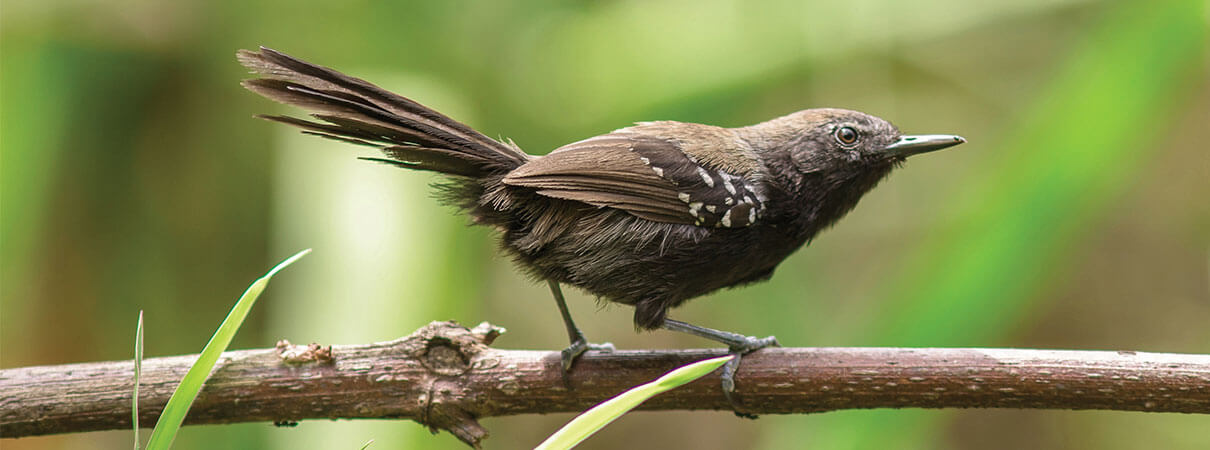
Marsh Antwren by Elvis Japão.
While it's true that more than a few tropical birds shine with jaw-dropping colors, this is not the case for all. Take the (São Paulo) Marsh Antwren, for example. Found within a tiny corner of Brazil's Atlantic Rainforest, this muted gray-brown bird inhabits an area as tropical as any in the world, yet it's far from flashy. On the other hand, it does share one thing with other Atlantic Rainforest birds: the loss of habitat. With its remaining marshland habitat threatened by development from nearby São Paulo, this antwren is now Critically Endangered. ABC is working with local partners to preserve important habitat for the species by protecting São Paulo's few remaining marshes.
3) All tropical birds live in trees: False
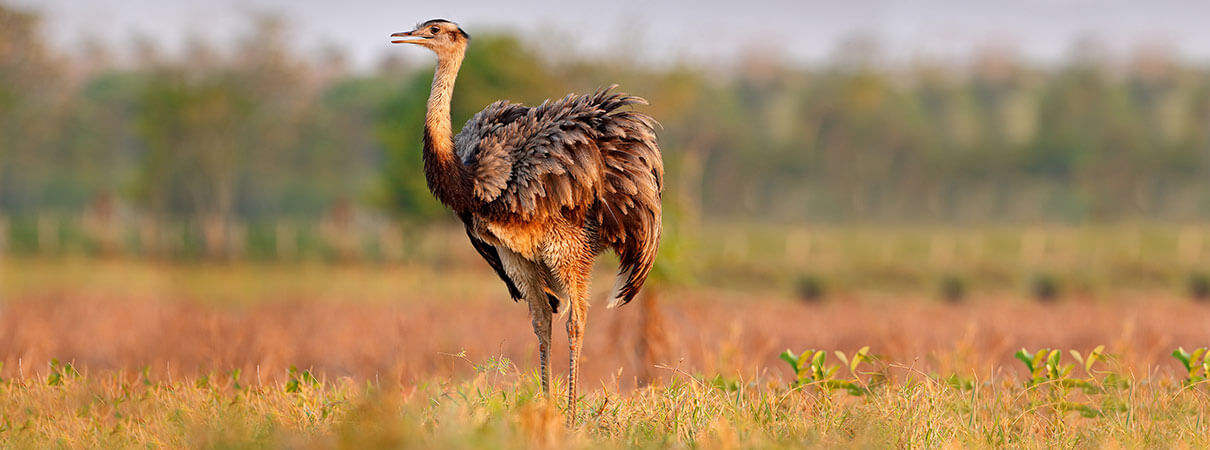
Greater Rhea by Ondrej Prosicky/Shutterstock.
In popular imagination, tropical birds screech from towering trees when not flitting from one vine-draped branch to another. But not all tropical birds live in trees – and not all can fly. Consider the Greater Rhea. This winged behemoth can weigh upwards of 50 pounds; it never leaves the ground; and it prefers to live in open grasslands far from trees. But it's not free of danger: Hunting, coupled with habitat loss, are primary factors driving Greater Rhea population declines, and the species is now considered Near Threatened. With ABC support, conservation partners in Bolivia have protected more than 27,000 acres for Greater Rheas, Blue-throated Macaws, and other rare species at Barba Azul Nature Reserve.
4) All tropical birds are parrots: False
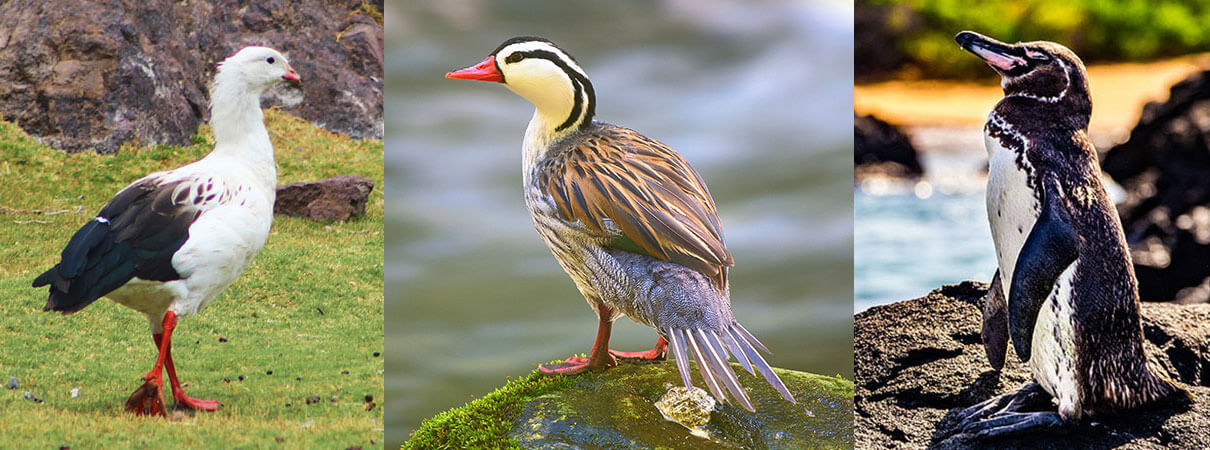
Left: Andean Goose by Mapu Fotografia/Shutterstock. Center: Torrent Duck by Christopher Becerra/Shutterstock. Right: Galápagos Penguin by Joseph Arsenault/Shutterstock.
South America is home to 145 parrot species, one of the largest collections of parrots in the world. While this may sound like a lot, more than 3,560 bird species live in South America, which means that parrots comprise less than five percent of the total. The remaining 95 percent contains more than a few surprises, starting with the Andean Goose, which inhabits cool mountain elevations in excess of 10,000 feet. And where you find geese, you find . . . ducks. Cue the Torrent Duck, which navigates fast-moving mountain creeks from Venezuela to Chile. Finally, an even bigger surprise: the Galápagos Penguin. Unlike other members of its family, this Endangered species is a tropical bird, residing on the Galápagos Islands, 600 miles off Ecuador's coast – right on the equator.
5) All tropical birds squawk: False
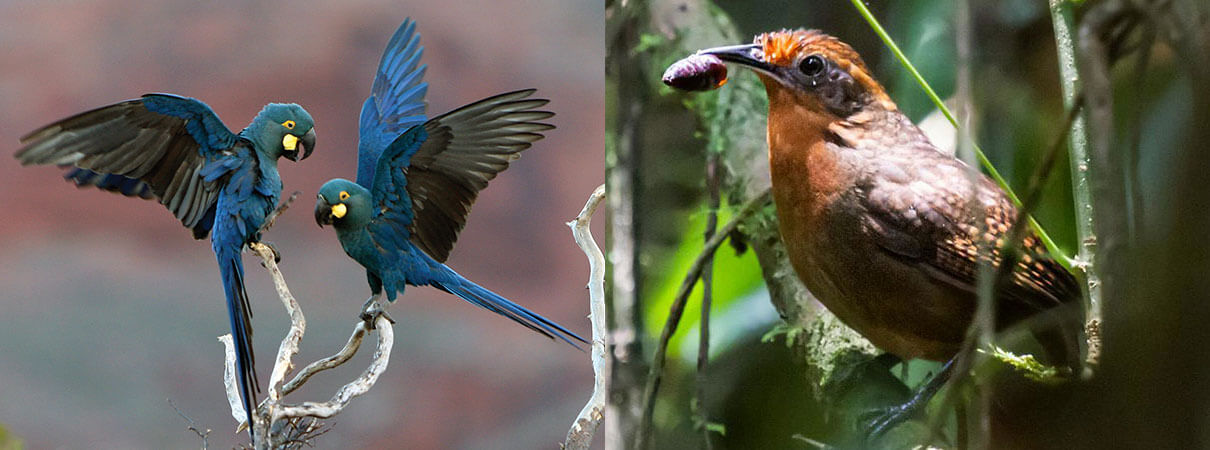
Left: Lear's Macaws by Ciro Ginez Albano. Right: Musician Wren by Nick Athanas/Flickr.
The tropics aren't without their share of raucous birds. When macaws get together, for example, the result can be fairly ear-splitting.
(Audio of Lear's Macaw by Niels Poul Dreyer, accessible at www.xeno-canto.org/14176 )
But the majority of birds in the tropics do not screech or squawk. On the contrary, quite a few sing eloquently. One of the finest is the Andean Solitaire, which is found in Andean forests stretching from Venezuela to Bolivia.
(Audio of Andean Solitaire by Jerome Fischer, accessible at www.xeno-canto.org/205565.)
Then there's the Musician Wren, whose stunning flute-like song ranks as among the most enchanting in the world.
(Audio of Musician Wren by Jerome Fischer, accessible at www.xeno-canto.org/14176
Musician Wrens, which are found at low densities across the northern Amazon, are considered by locals to bring good luck. This belief, however, has been anything but good for the solitary singers, which are hunted and stuffed for sale as charms. Although not yet considered threatened, Musician Wren populations are now decreasing. ABC worked with conservation partners in Peru to protect habitat for the Musician Wren in the Allpahuayo Mishana National Reserve.






































